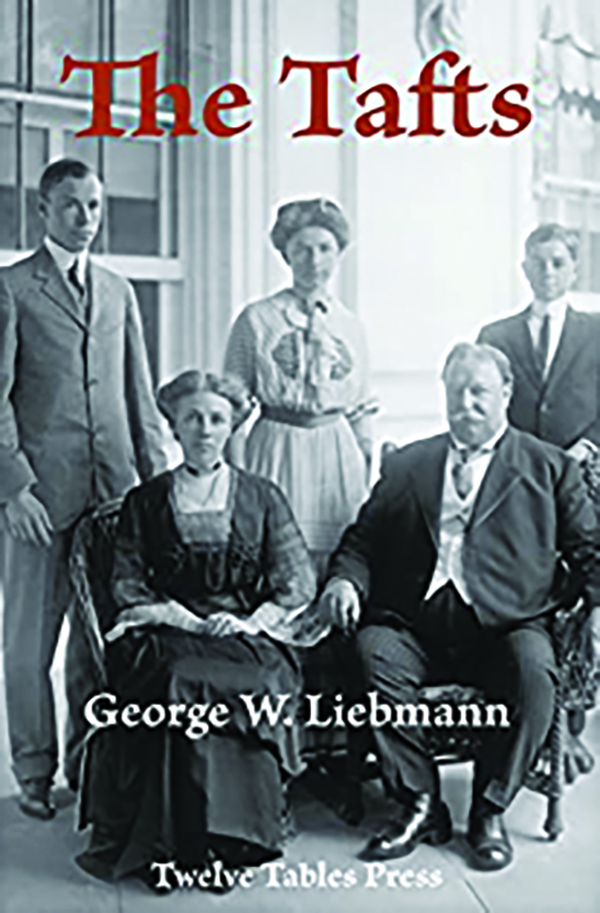
The Taft family
Avi Woolf
Americans tend to dislike family dynasties and self-declared aristocracies deeply. Whether political or financial or otherwise, they always seem to rub a democratic people the wrong way, as too entitled or corrupt or abusive. But America also has a long history of what one might call “aristocracies of service,” prominent families who earned their status anew every generation through genuine stewardship of public affairs, leadership, and community.

One such family is the Tafts, five generations of a staunchly Republican Ohio family most famous for President William Howard Taft and Senate Republican leader Robert Alphonso Taft, who gave their name, time, energy, and erudition to make their state and country a better place to live. Avoiding things such as sexual or financial excess and emphasizing education, virtue, and hard work, the Tafts were and are a collective role model sorely needed in our day and age.
George Liebmann, the author of several books on America’s traditions of politics and law, has now taken up the mantle of telling their story, arguing that “unsympathetic biographers” (a point we’ll return to later) have blackened the name of the Tafts and especially William Howard Taft and Robert Taft as nothing more than corrupt and stupid reactionaries uninterested in needed reform or change.
The result is a generation-by-generation breakdown and discussion of the life and work of each member of the Taft family, from the paterfamilias Alphonso Taft, who served in the Grant administration and as an Ohio judge, down to the present day, with people such as William Howard Taft IV, who publicly fought the Bush administration over the question of torture.
While the former president and former senatorial leader receive the bulk of this book’s attention, there is still plenty of information on all the other family members’ work. I particularly enjoyed learning about the life and thinking of the first Alphonso Taft, whose civic and religious principles informed the family’s subsequent generations.
Readers will also receive a much more balanced picture of William Howard Taft and Robert Taft, with extensive quotes of their actual positions and views. The father was a staunch believer in the law and a balanced system between labor and capital and between democracy and the courts, the son a much more thoughtful critic of the New Deal and supporter of floor-level government aid than realized today.
However, the book suffers from a number of serious drawbacks that make it hard to recommend wholeheartedly. It is very poorly organized and written. Too many of the entries read like Wikipedia-style bullet points and notes for the preparation of a fully-fledged book rather than a proper narrative or story. This is not helped by an approach to history that amounts to “quote-bombing” of extensive sections of speeches, books, and histories. It’s all well and good to hear things from the people themselves, but this is simply not a replacement for calm, careful comparison and analysis, subject by subject, period by period. The author simply assumes readers know and understand a whole range of complicated and contested legal and political subjects, such as World War I, labor law, and the New Deal.
The reader of this book is subjected to an avalanche of often uncharitable and downright nasty comments on a whole host of people and topics, backed by nothing more than a brief comment by the author, a choice quote or two, and the occasional reference. I am not knowledgeable enough on all the issues the Tafts dealt with to comment on all these asides, but those cases I am aware of make me look askance at the whole project. President Calvin Coolidge was not “indolent.” He simply possessed a different and quite traditional view of how presidents operated than H.L. Mencken would have liked. Thomas Dewey was very much not a guy who believed in a “do nothing” government, and Robert Taft himself blasted him as a squishy “Me Too” man (in the sense of “I like welfare, too”). Questions of how much immigration and trade affect American industry and workers are not as clear-cut as Liebmann would have it.
It’s not just that I disagree with the author’s opinions and tone. It’s that his using the Tafts as a soundboard for his own political grievances means we are deprived of a chance at a deeper look at how the family operated, what Ohioans thought and think of them, and perhaps even whether there are other families like that out there. In the epilogue, Liebmann rightly characterizes the Tafts as the sort of service aristocracy I described above, yet his desire to settle scores conceals that in the actual book.
The Tafts is a very good basic introductory level tome for a family that deserves much more recognition and even emulation than it has today. But those who wish for a fairer, more organized, more detailed, and more enlightening discussion of the family, both individually and collectively, would do well to consult some of those “unsympathetic” biographies the author distracts from his work to gripe about.
Avi Woolf is an editor and translator. He has been published in Arc Digital, National Review, the Bulwark, and Commentary.
